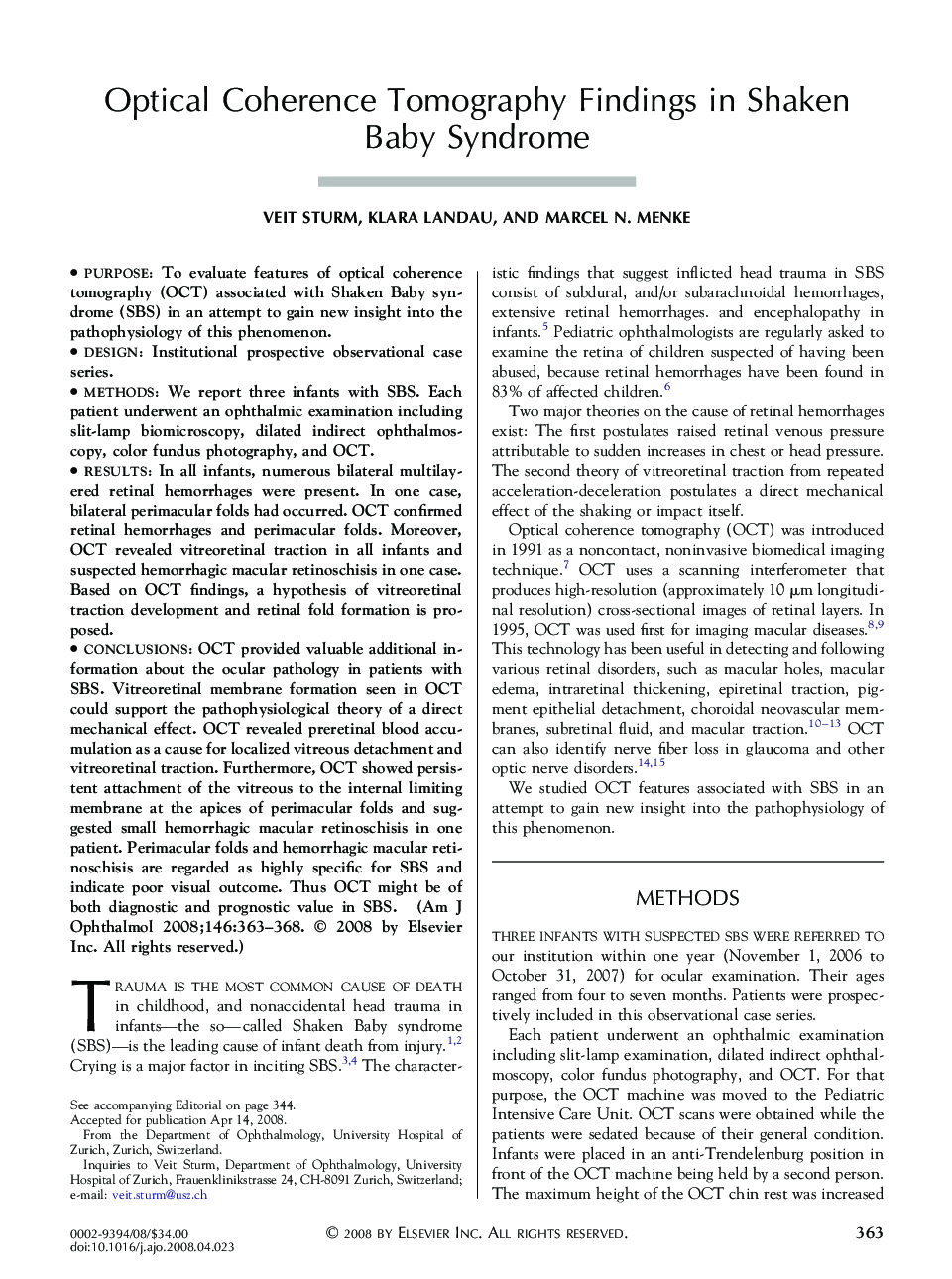| Article ID | Journal | Published Year | Pages | File Type |
|---|---|---|---|---|
| 4004708 | American Journal of Ophthalmology | 2008 | 6 Pages |
PurposeTo evaluate features of optical coherence tomography (OCT) associated with Shaken Baby syndrome (SBS) in an attempt to gain new insight into the pathophysiology of this phenomenon.DesignInstitutional prospective observational case series.MethodsWe report three infants with SBS. Each patient underwent an ophthalmic examination including slit-lamp biomicroscopy, dilated indirect ophthalmoscopy, color fundus photography, and OCT.ResultsIn all infants, numerous bilateral multilayered retinal hemorrhages were present. In one case, bilateral perimacular folds had occurred. OCT confirmed retinal hemorrhages and perimacular folds. Moreover, OCT revealed vitreoretinal traction in all infants and suspected hemorrhagic macular retinoschisis in one case. Based on OCT findings, a hypothesis of vitreoretinal traction development and retinal fold formation is proposed.ConclusionsOCT provided valuable additional information about the ocular pathology in patients with SBS. Vitreoretinal membrane formation seen in OCT could support the pathophysiological theory of a direct mechanical effect. OCT revealed preretinal blood accumulation as a cause for localized vitreous detachment and vitreoretinal traction. Furthermore, OCT showed persistent attachment of the vitreous to the internal limiting membrane at the apices of perimacular folds and suggested small hemorrhagic macular retinoschisis in one patient. Perimacular folds and hemorrhagic macular retinoschisis are regarded as highly specific for SBS and indicate poor visual outcome. Thus OCT might be of both diagnostic and prognostic value in SBS.
